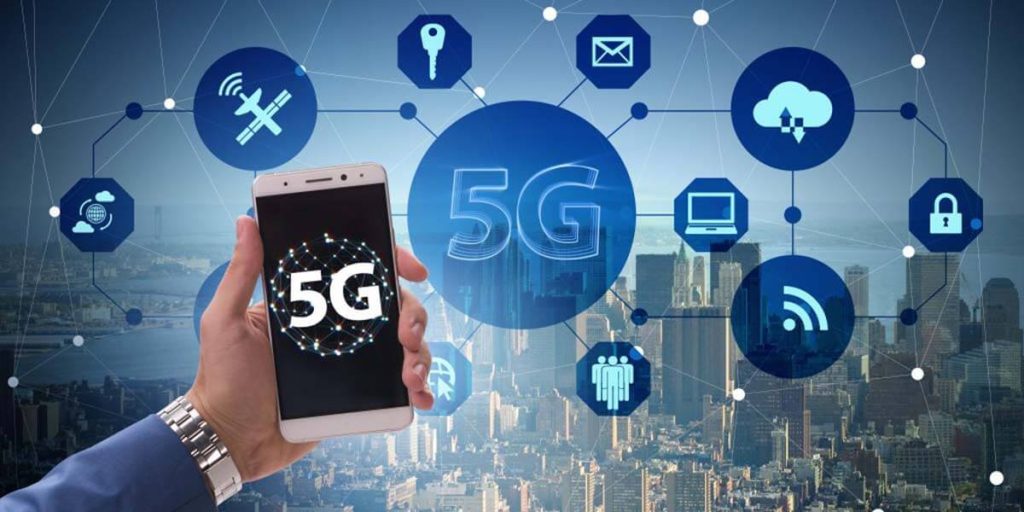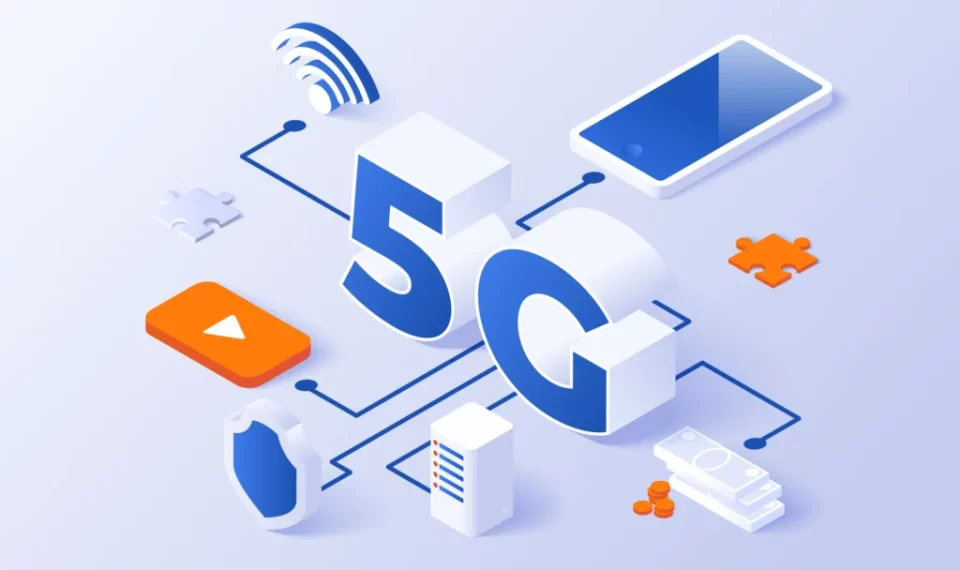- Multi-Gigabit Download Speeds: Experience near-instant app downloads, seamless 4K/8K video streaming, and lag-free cloud gaming on the go.
- Revolutionized Latency: Ultra-low latency under 10ms makes video calls crystal clear, mobile gaming incredibly responsive, and remote work feel instantaneous.
- Enhanced Network Slicing: Carriers can now offer dedicated “slices” of their network, ensuring priority for critical tasks like telehealth or business applications.
- Advanced mmWave & C-Band Coverage: A robust blend of high-speed (mmWave) in dense urban areas and widespread coverage (C-Band) provides a superior 5G experience across the USA.
- Intelligent Battery Management: Next-gen modems and software are smarter, significantly mitigating early 5G battery drain issues for all-day use.
- The Foundation for AI & AR: Powerful on-device AI and immersive Augmented Reality experiences rely on the high-speed, low-latency data pipeline that 5G provides.

Detailed Specs Table: 5G Connectivity in 2025
| Feature/Spec | 2025 Status & Details | Impact on User Experience |
|---|---|---|
| Max Theoretical Speed | Up to 10 Gbps (on mmWave) | Download a full-length HD movie in seconds. |
| Real-World Avg. Speed (USA) | 150-500 Mbps (C-Band/Nationwide) | Flawless streaming, rapid file uploads, and smooth video conferencing. |
| Latency | 5-20ms (vs. 40-60ms on 4G LTE) | Eliminates lag in gaming and video calls; enables real-time remote control. |
| Key Supported Bands | n260, n261 (mmWave); n77 (C-Band) | Ensures compatibility with high-performance networks from Verizon, AT&T, and T-Mobile. |
| Modem Technology | Snapdragon X75, Future Apple Modem | More energy-efficient, better signal acquisition, and support for upcoming 5G-Advanced features. |
| Network Slicing | Commercially Available on Major Carriers | Allows for prioritized service plans (e.g., a “Gaming Slice” with guaranteed low latency). |
Price and Availability Info
The best 5G phones in 2025 are widely available across all price segments. You no longer need a flagship device to get a great 5G experience.
- Flagship Phones ($800+): Include the latest modems with full mmWave and C-Band support (e.g., iPhone 16 series, Samsung Galaxy S25 series).
- Mid-Range Phones ($400-$700): Often feature robust C-Band support for excellent performance, sometimes omitting mmWave to reduce costs (e.g., Google Pixel 8a, OnePlus 13).
- Budget Phones (<$400): Consistently include solid “Nationwide 5G” (low-band) connectivity, with many now incorporating C-Band.
Availability: All major US carriers (Verizon, T-Mobile, AT&T) and retailers (Best Buy, Amazon, carrier stores) offer a full range of 5G-capable devices. Be sure to check carrier compatibility before purchasing.
Pros and Cons Analysis
Pros:
- Blazing-Fast Speeds: The most noticeable benefit. Perfect for heavy media consumers, remote workers, and anyone who values efficiency.
- Future-Proof Investment: A 5G phone purchased in 2025 is ready for network advancements and new data-intensive applications for years to come.
- Superior Congestion Handling: 5G performs significantly better than 4G in crowded areas like stadiums, airports, and concerts.
- Enables New Tech: Unlocks the full potential of AR apps, real-time AI assistants, and high-fidelity mobile cloud gaming services.
Cons:
- Battery Impact Can Vary: While improved, actively using 5G, especially mmWave, still consumes more power than 4G. Look for phones with large batteries.
- Coverage is Not Universal: While excellent in urban and suburban areas, true high-performance 5G can still be spotty in rural parts of the USA.
- Potential for Higher Plan Costs: Access to the fastest 5G tiers often requires a premium unlimited plan from your carrier.
- mmWave’s Limited Range: The highest speeds are only available in very specific, small pockets of major cities and indoors penetration is poor.
